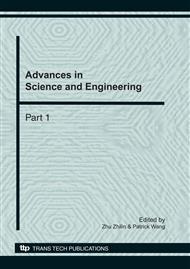p.425
p.430
p.433
p.438
p.443
p.448
p.453
p.457
p.462
A New Method of Neurofuzzy Network Based on Variable Precision Rough
Abstract:
In view of the current application deficiency of neuro-fuzzy network, a new optimal method of neurofuzzy network based on variable precision rough set is presented and its application in complex systems modeling is discussed. This method takes the β classification accuracy of variable precision rough set theory as information function to select the condition attribute, and then modeling data are discredited through selecting a proper precision to forms a decision table. Finally, the significant attributes and the key attribute values are extract from the decision table by using reduction algorithm based on variable precision, and are map pad into the fuzzy rules.It simplifies the fuzzy rules and therefore optimize the structure of neuro- fuzzy network effectively, reducing the training time of neural network greatly and improving the precision of training. This method has been applied to the modeling of non-linear time-delay system with a large number of sam-pling data, the validity and feasibility of this method is demonstrated by an example of modeling.
Info:
Periodical:
Pages:
443-447
Citation:
Online since:
November 2010
Price:
Сopyright:
© 2011 Trans Tech Publications Ltd. All Rights Reserved
Share:
Citation:


